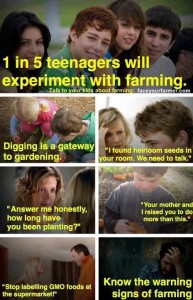The Wealth of Man: The True Economy
“Literature was born next to the warm hearth of the family household and has no place in the accountant’s ledger.”
As economists know, the prices of goods in any market are determined by the desires of consumers. The consumer is viewed in traditional microeconomics as being a “rational individual”, thinking on the margins – how much would I pay for another unit of this product? The origins of human desires are not questioned, and it is their satisfaction with which economics concerns itself. This attitude has led to the modern framework of economics, particularly under neoliberal policies, which hold increasing material wealth and economic growth to be the sole goal of “development” and the standard for cultures and societies around the world to be considered “modern”, “progressive” or “developed”.
The traditionalist blog The Imaginative Conservative recently published an excerpt from the book Return to Order by John Horvat entitled “Reviving the Heart and Soul of an Economy.” Note: I am commenting only on this excerpt as I have not read the entire book. Horvat attacks this foundational assumption of economic theory and practice, arguing that it has led to current economic turmoil. Economics must be restored to the human sphere – that is, to the real experience of life and community. The author argues that the end of economic activity must be “to produce, exchange, and enjoy together those goods deemed helpful to the common good and the perfection of our nature.”
This model of economics resembles other critiques which question the neoliberal assumption of “materialist” and “economic” ends, arguing that proponents of economic development must take into account the values of the cultures they are operating in. For Horvat, this is the Christian faith and the Western tradition. Those of us living in the West must read Horvat’s work as something more than a critique, as it concerns our culture, our values, and our heritage. What the Zapatista represents in Chiapas, Horvat represents in the Western and formerly Christian world.
Horvat argues that a healthy social order will be built around institutions which act as restraints on frenetic intemperance – the eclipsing of self-control and rational action by desire or gluttony (for example, the starving student who buys each new iPad simply because of his brand loyalty). It is the breakdown of these institutions in the West and thus the lack of restraints on frenetic intemperance which have led to much current economic turmoil. During the economic crisis in 2008/9, it was assumed that the lack of regulation naturally led to Wall Street making bad loans, which, as rational consumers, those unable to afford a mortgage would then take advantage of. Horvat goes further and wishes to examine what about the human condition causes such decisions to be made. How did the culture of frenetic intemperance arise on Wall Street and society at large, and how can it be overcome?
What are the institutions that Horvat is talking about? There is the family, which “is a dynamic source of uncompensated activity that freely provides its members with shelter, nourishment, education, affection, and healthcare”, and indeed from which the economy was born (the word oikonomos refers to “one who manages a household”). Then there is the Church (the absence of which in the lives of most – including yours truly – would stun our grandparents), which in times gone by led men and women in their inner, moral, and spiritual development, and was a bastion of art, culture, science, education, and charitable organization – and still does so for a billion strong today, as do its counterparts in other religious traditions. Private property allowed families and individuals to participate in economic life and bound them together in common cause. Most of our ancestors, living on the land, would experience the hardships and challenges of farming together. It is no wonder that growing rates of divorce correlated so strongly with industrialization.
The strength of these and other institutions lies in their role as a “”vast world of self-sufficiency” – sources of immense material and spiritual wealth that largely go uncompensated, remain unrecorded, or defy quantification.” These institutions form the basis of the economy by defining what is meant by the common good and discerning the goals of human existence and society. Economists can determine if something can be done; social institutions determine whether it should be done. Moreover, it is not enough to simply attempt to replace these organic structures with the regulatory boards of the State. The Soviet experiment in communism proved what happens when this foundation is “deliberately strangled” – the human being cannot develop under the boot of oppression. The final results of the far longer-running experiment of Liberalism are yet to be seen.
Those of us concerned with economic development must begin asking these fundamental questions beyond a purely sociological level, for they also apply to us. The dialogue of the Western critique of neoliberalism, which so often focuses mainly on the need for “democratic participation” and “localism” in Western societies, as opposed to the importance of culture and identity in other parts of the world, must go beyond the “how” economic management and examine its social foundations. For this, it is not enough to simply make appeals to democracy, for democratic decisions are made by individuals who have been raised in a culture of frenetic intemperance. If we are to remaster our lusts and desires, we need a framework for judging how this should be done, not to mention teachers who can show us the way. The fact of the matter is that we have no standard for the common good today, nor any idea of what the ends of our existence, and thus our social and economic order, should be. Those of us focusing on economics and development must begin to consider the role of social institutions in defining our economic life, and how economic and developmental policy can foster their growth and health. In many cases, we may actually need to work toward their rebuilding. But, as Horvat states, these institutions were not only united horizontally, by social bonds and economic activity. They were gathered around a pole and a center, the Christian tradition and the Church which embodied it (and in other countries, around the Ummah, the Synagogue, the religious rites of Japanese Shinto and Zen, Chinese Taoism and Confucian order, and so on) which created a vertical unity with a cosmic order lying beyond the merely human.
The question is: is there a final cause to be pursued in human existence and if so, how can it be attained? As demonstrated by our vast framework of myths, ideologies, philosophies, and even the ideology of progress itself, human nature seems to gravitate toward imagining ourselves as parts of a greater whole. If no transcendent ends exist, the framework is provided by those with the charisma and will needed to win minds over or else impose it on them. Long ago, Sir Francis Bacon said that physics concerned itself with the material and efficient causes – which is to say, matter and motion – but that metaphysics was needed to determine final causes. Today, economics allows us to access human desires and how best to meet them. We have forgotten that we must also evaluate these desires, and that the common good stands prior to economics. For this common good, something else is needed. For those of us living in a de-cultured, de-socialized West, it may be worth turning our eyes toward our own forefathers and asking them “what were you living for?”


 Follow
Follow






